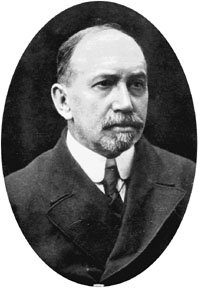

 | Page 640 |  |
director he excavated at the site of Phylakopi on Melos, and at Naucratis. In 1900 Hogarth left the British School and joined sir arthur evans in his first season on Crete, which saw the beginning of the excavation of knossos.

David George Hogarth
(Image Select)
In 1903 Hogarth spent another season excavating at Naucratis, and in 1904 and 1905 he excavated the temple of Artemis at ephesus on behalf of the british museum. In 1908 he visited the upper Euphrates River surveying the sites of Carchemish and Tell Bashar. In 1908 he became Keeper of the ashmolean museum in Oxford, and to began to excavate Carchemish with the young archaeologists leonard woolley and T.E. Lawrence, both of whom would later become more famous than their mentor.
The Ashmolean Museum prospered under Hogarth—becoming especially important for its Cretan and Hittite archaeological collections, the later of which was Hogarth’s primary interest. In 1915 he offered his linguistic, geographic, and historic expertise on Asia Minor and the Eastern Mediterranean to the War Office and was sent first to Athens and then to Cairo where he became director of the Arab Bureau. In this position and with the help of T.E. Lawrence and gertrude bell, Hogarth was able to encourage and support the Arab rebellion against Turkey, which was to be decisive in the war in the Middle East.
In 1917 Hogarth received the gold medal from the Royal Geographic Society and in 1925 he became its president. After the war he was a member of the British delegation at the Peace Conference at Versailles and he returned to the Ashmolean Museum and Oxford. He was awarded a D.Litt. from Oxford in 1918 and a Litt.D. from Cambridge in 1924.
See also
Britain, Classical Archaeology; Mesopotamia
(1846–1933)
William Henry Holmes was the preeminent figure in American archaeology around the turn of the last century. With the careful eye of an artist, he pioneered material culture studies, particularly the understanding of ceramic form, function, and design, and lithic technology. His analysis of collections at the smithsonian institution (where Holmes was affiliated for nearly sixty years), replicative experiments, and excavations at prehistoric quarries enabled him to reconstruct in unprecedented detail the process and products of ceramic and stone tool manufacturing.
Studying stone tools revealed that what many people thought were primitive, ancient artifacts—indicators of an American Paleolithic period comparable in age to the Paleolithic of Europe—were merely rejects of the manufacturing process. Armed with that realization and the expertise developed in years of geological fieldwork in the western part of the United States, Holmes spearheaded the highly successful rout of the American Paleolithic. For several decades, Holmes, his geologist colleagues, and a protégé, the physical anthropologist ales hrdlicka, critically evaluated all purported claims of Pleistocene humans in North America. Although they
 |  |